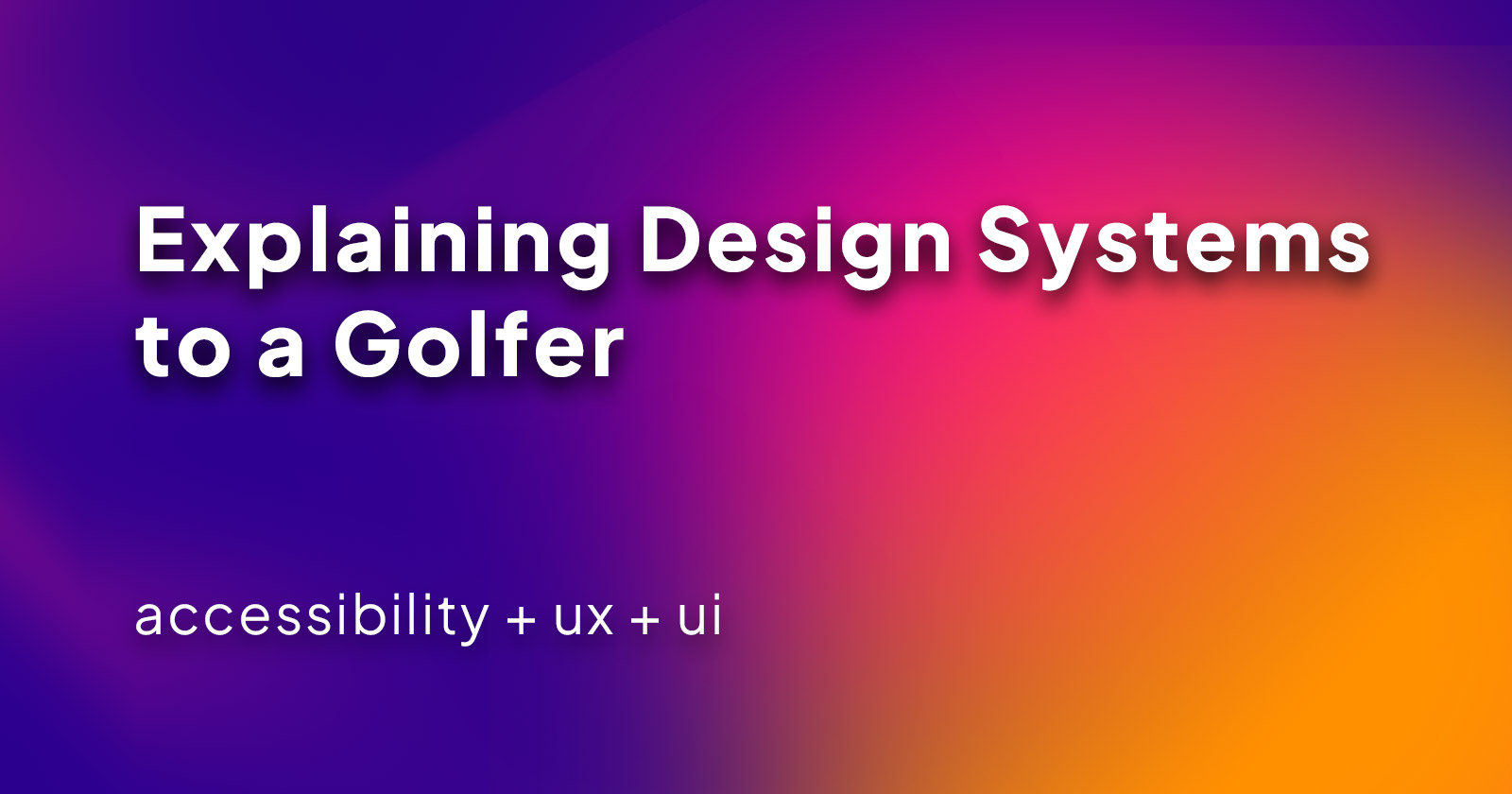Explaining Design Systems to a Golfer
 Homer Gaines, CPACC
Homer Gaines, CPACC
I was out “playing” golf with my Pops, and we hit the subject of work and side projects. He's aware of the work that I do regarding accessibility, but he's not as familiar with the details of Design Systems. He's both business and tech-savvy, but knowing he's an avid golfer, I chose to explain what a Design System is using golf analogies. It went something like this...
Me:
Ok, Pops, think of yourself as the developer, and your golf bag is your design system that holds the tools you need when working on a project.
Dad:
Ok, and the project is me going out to play. Got it.
Me:
Yep! It contains everything you need while you're out on the course. You have your clubs, balls, tees, scorecards, range finder, etc. All these things represent the various parts of a design system, like components, documentation, styles, and standards.
So you're out there now; what's the first thing you do? You check the stats of the hole, right? What's the Par, yards to the green, wind? This is the same as reviewing the requirements or documentation before working on a new project.
Now, before you tee off, you choose the correct club. The club you choose is the component. Each club has its own characteristics...
Dad:
I'm not going to choose a wedge in the tee box.
Me:
Facts! You'll grab a driver.
You don't want to take your first swing out of the box with a driver that performs like a wedge. My job is to ensure that the club you choose meets your mental model or standards of a driver. At a high level, your driver, like all clubs, has a head, shaft, and grip. Together, they make a larger component with a set of properties.
Each club has a purpose. We call this the functional specs. And each club has a particular look and feel as well. These are the design specs. The head and face of a wedge function differently than that of a driver. The properties allow me to adjust the characteristics of the head, shaft, and grip to meet the driver's specs.
The whole reason for the design system, at the end of the day, is to provide you with the correct club that does the job you are expecting. You know that the driver you choose is going to be that driver with the same characteristics every time you reach into your bag. I've seen some apps that would have you trapped in a bunker with a baseball bat. Horrible experience! Managing and maintaining an app or project like that is straight trash! It's not efficient and requires a ton of wasted effort.
Dad:
Ha! Yeah!
Ok… So I grab my driver... and because you have used the correct specs... when I come out of the box, the ball will be downrange as expected. This is my experience. It’s meeting my expectations.
Me:
Yeah, as the developer, this is the developer's experience. And as the consumer, this would be the user's experience. If this were a button component in the design system, it would be built to meet the functional and design specs. That way, you, being the developer, would have full confidence that this button will meet the requirements. And from the user's point of view, you would have confidence that the button would behave as expected.
Dad:
Seems simple enough. Now you're building out these components to be accessible as well, correct?
Me:
Yep!
Dad:
Ok, from a process perspective, this is a no-brainer. I would think anything that makes work more efficient and life a bit easier would be more of a priority. Not having a system in place like this seems to be a miss which could lead to issues down the line.
Do you find yourself having to convince people that having a design system and improving accessibility is beneficial?
Me:
All the time!
In spite of the benefits, not everyone is on board with it because it's an internal product. While it indirectly helps the bottom line, they either don't see the value or feel like the effort to stand a design system up isn't worth it. It's the same with accessibility. I have to explain how accessibility errors could be minimized when using a design system that's built from an accessibility-first mindset because it help minimize the small issues that get replicated. It’s basically… you know… garbage in, garbage out.
Dad:
Ha! Like your swing, Tee up, Gaines!
My Pops has jokes. But anyway…
To be fair, yes, my golf game from the tee to the green is trash! However, thanks to playing Putt-Putt for years, I’m a problem on the green once I get there.
Subscribe to my newsletter
Read articles from Homer Gaines, CPACC directly inside your inbox. Subscribe to the newsletter, and don't miss out.
Written by

Homer Gaines, CPACC
Homer Gaines, CPACC
I'm a designer, UI engineer, and certified accessibility professional with over 30 years of experience. With a background in behavioral psychology and neurology, I focus on leading, promoting, and advancing accessibility at every stage in the product development lifecycle.